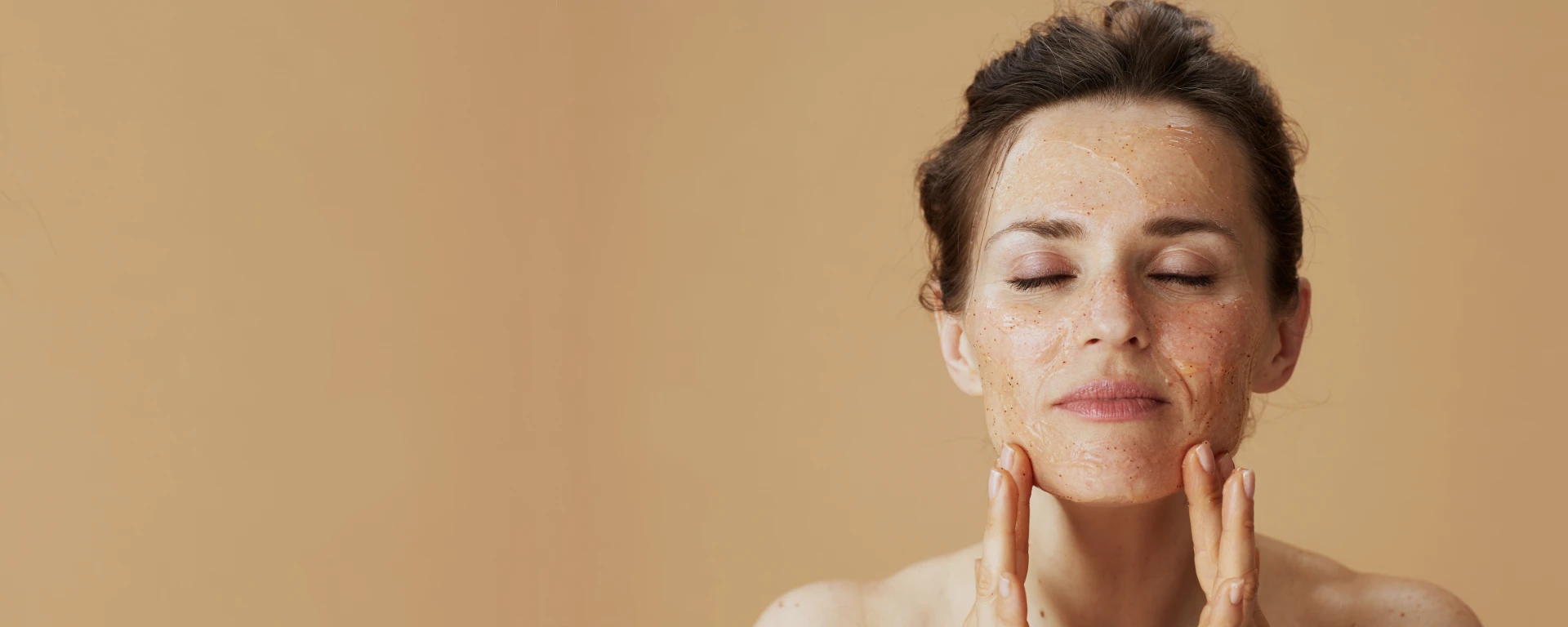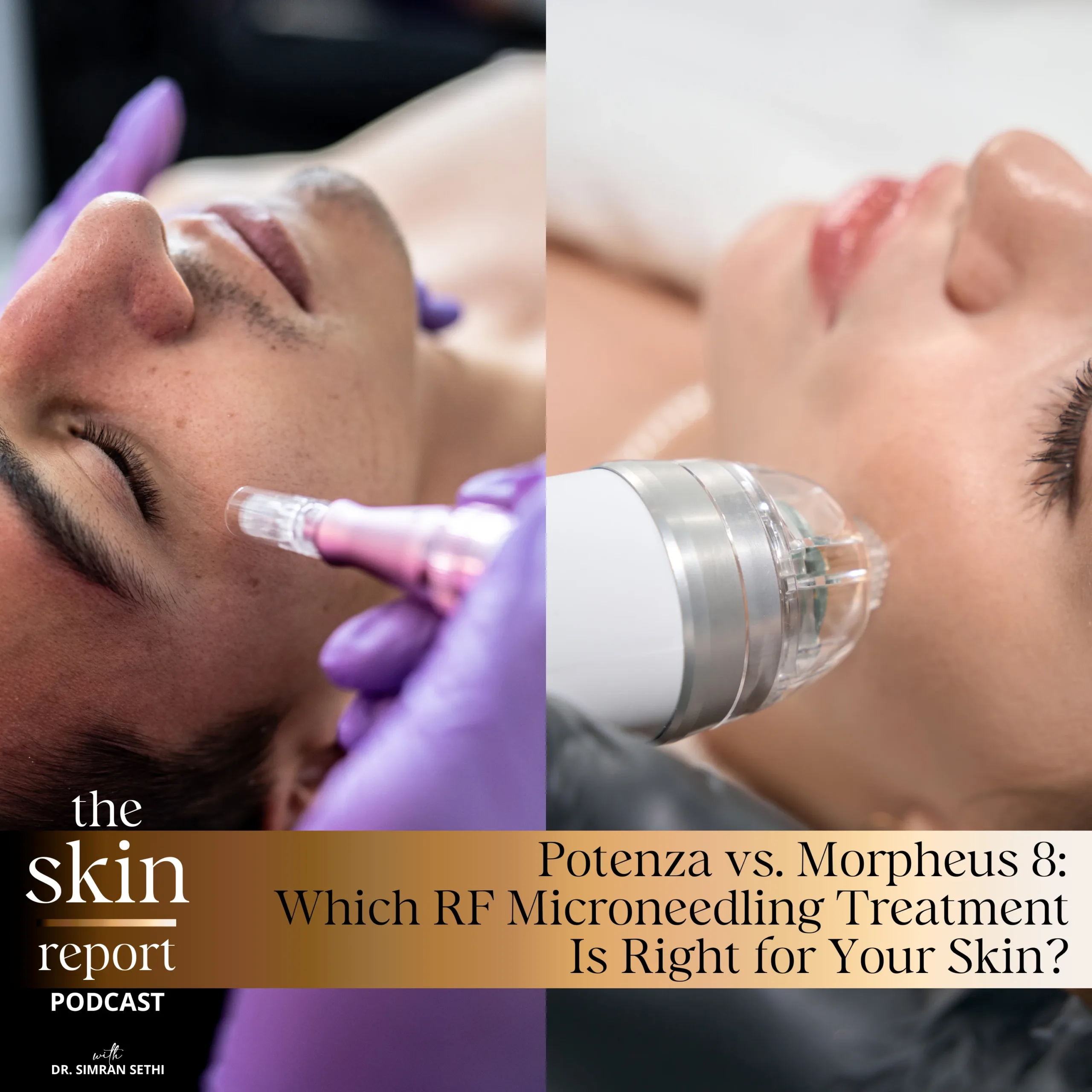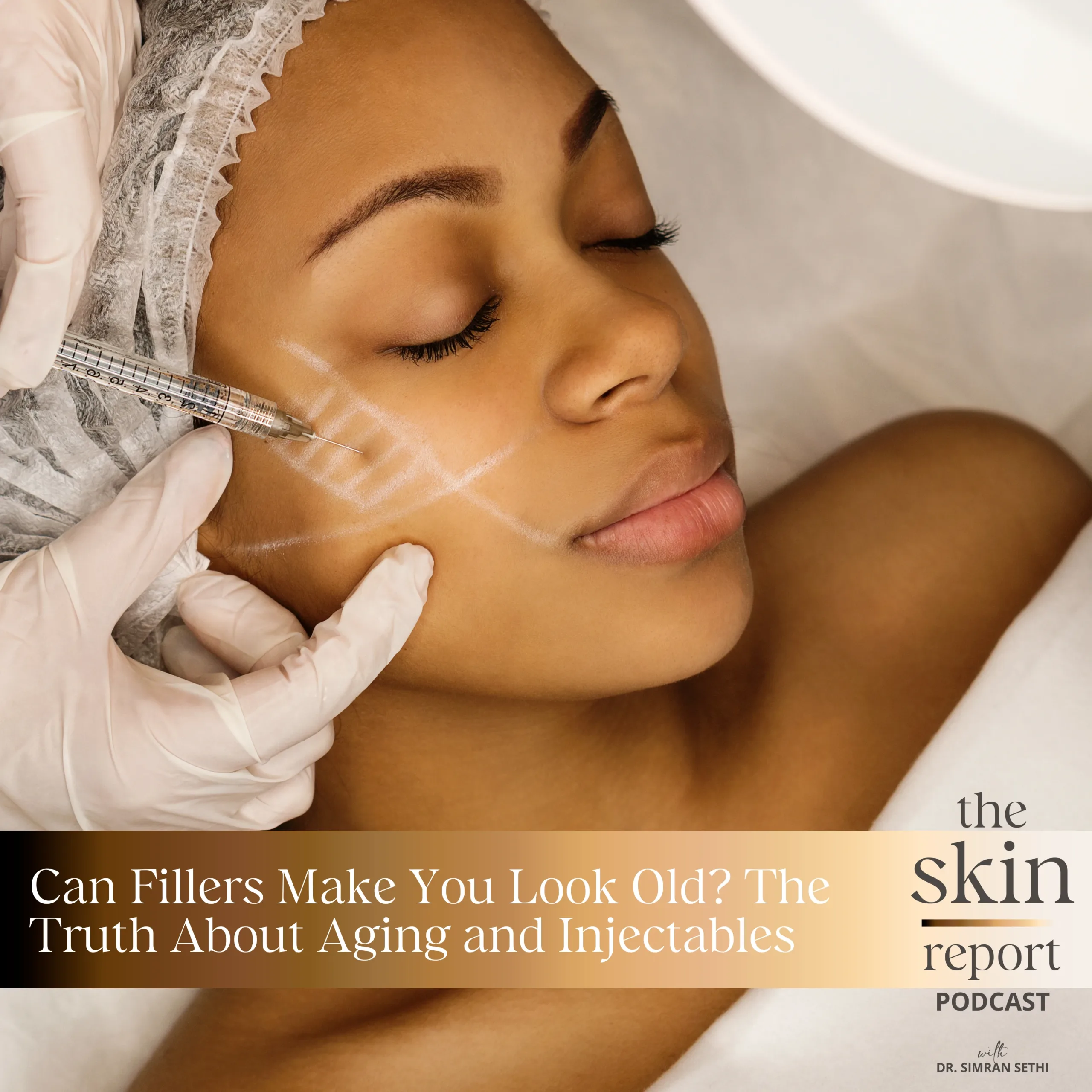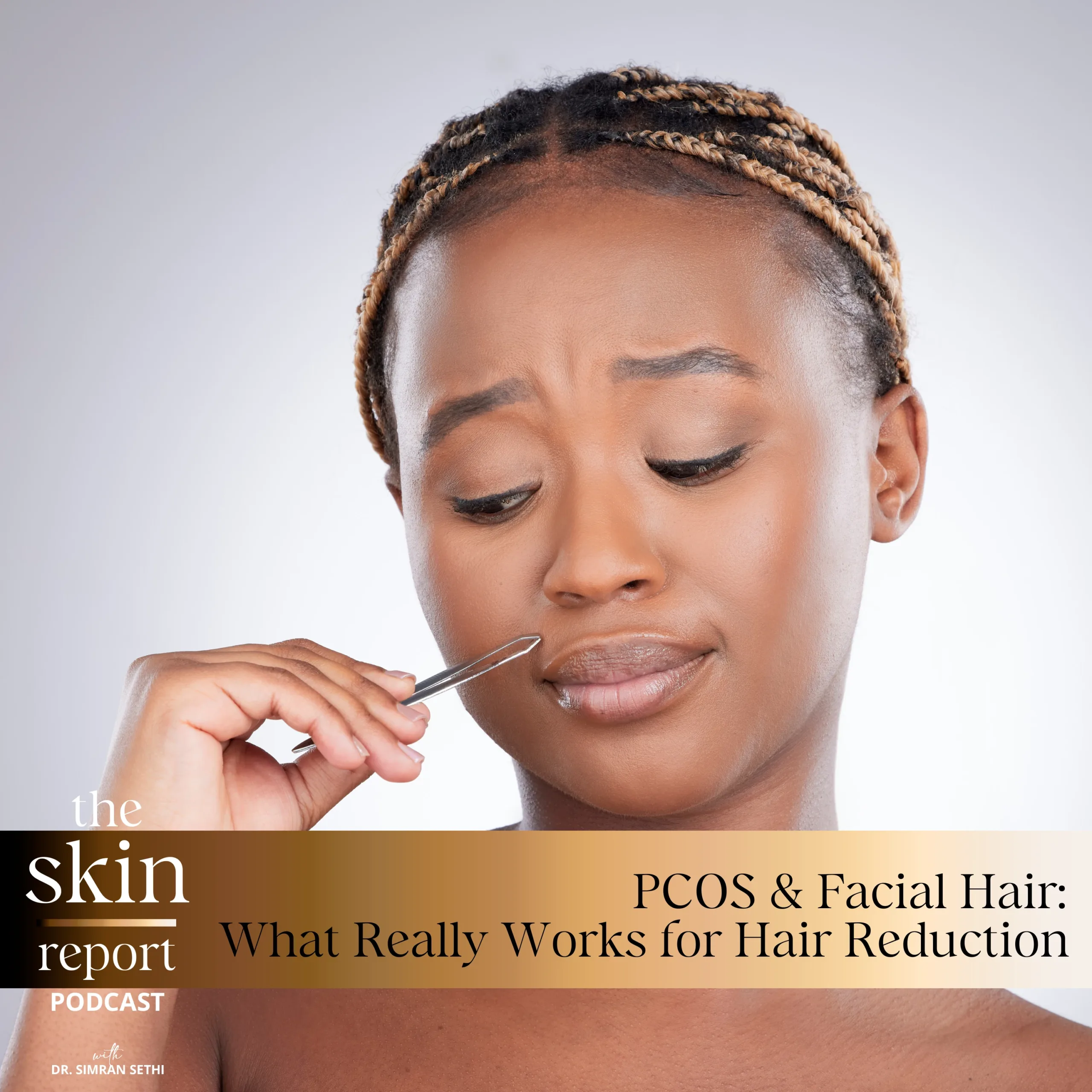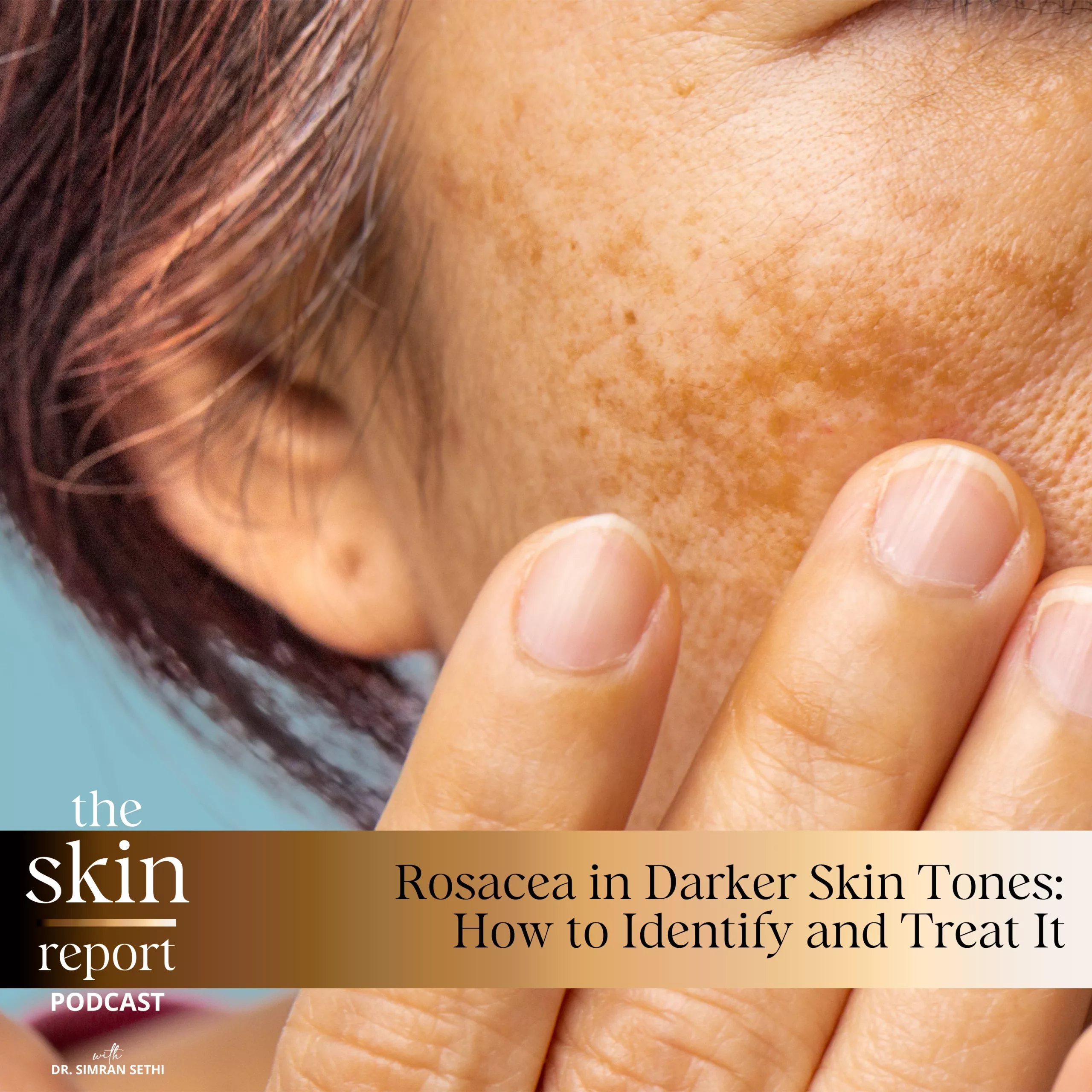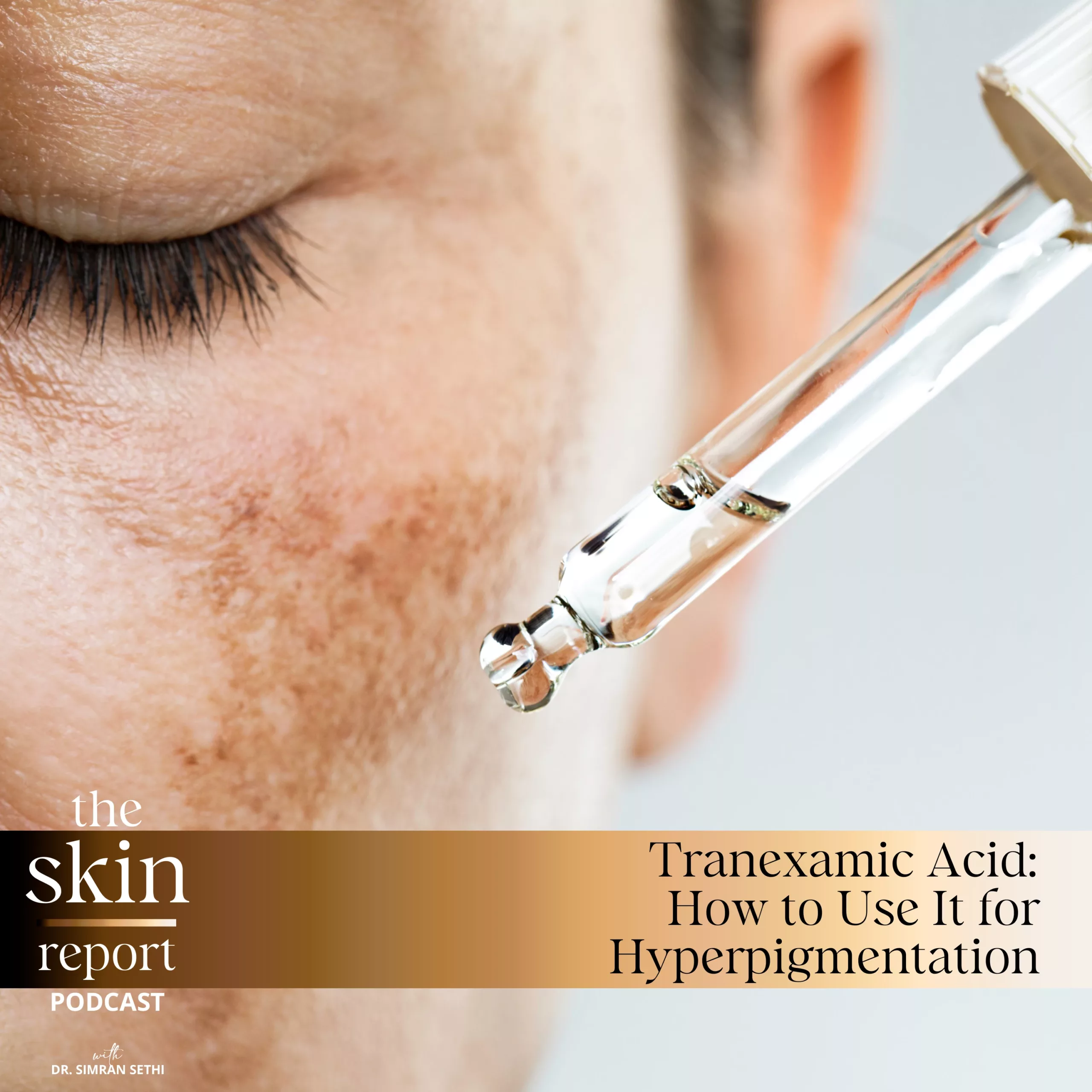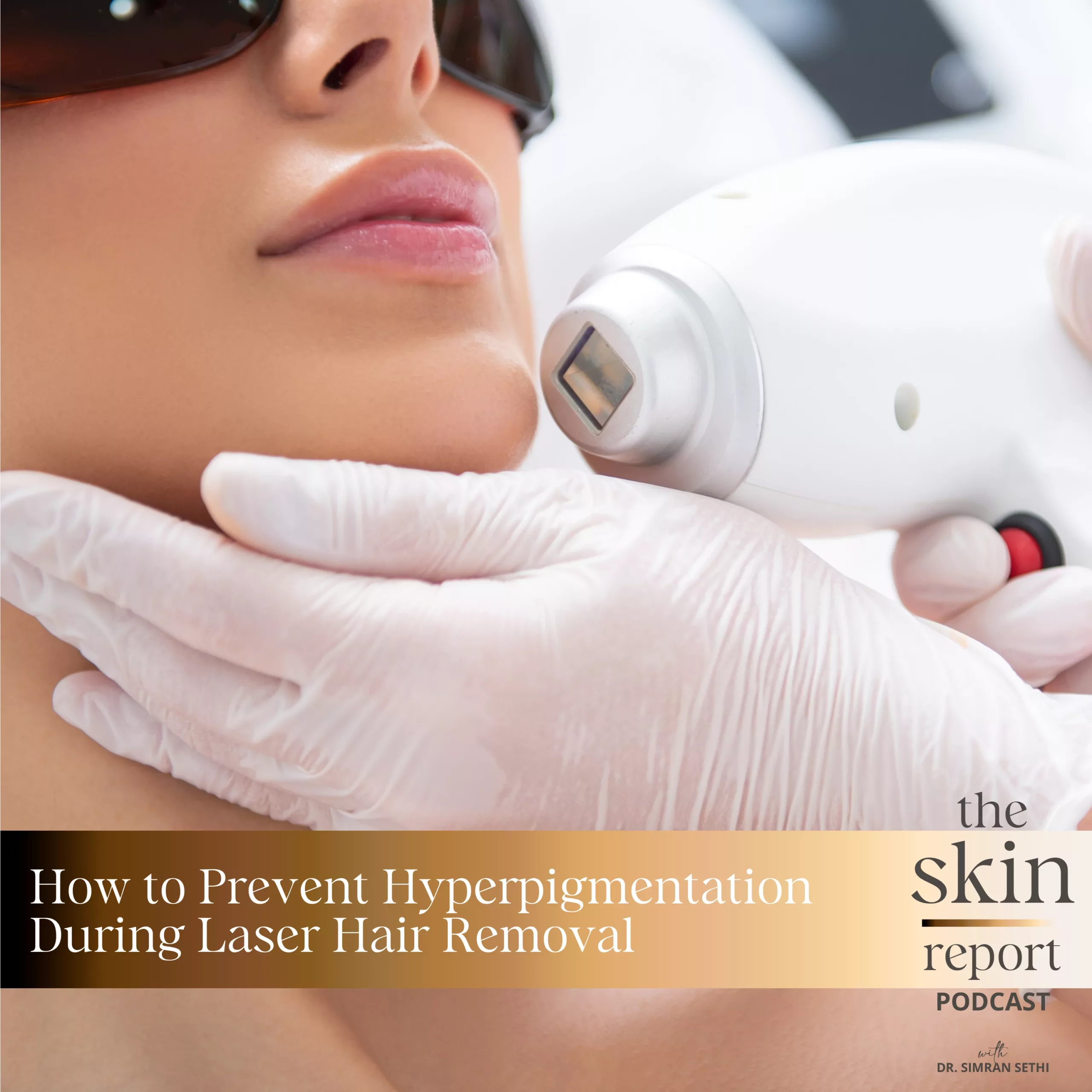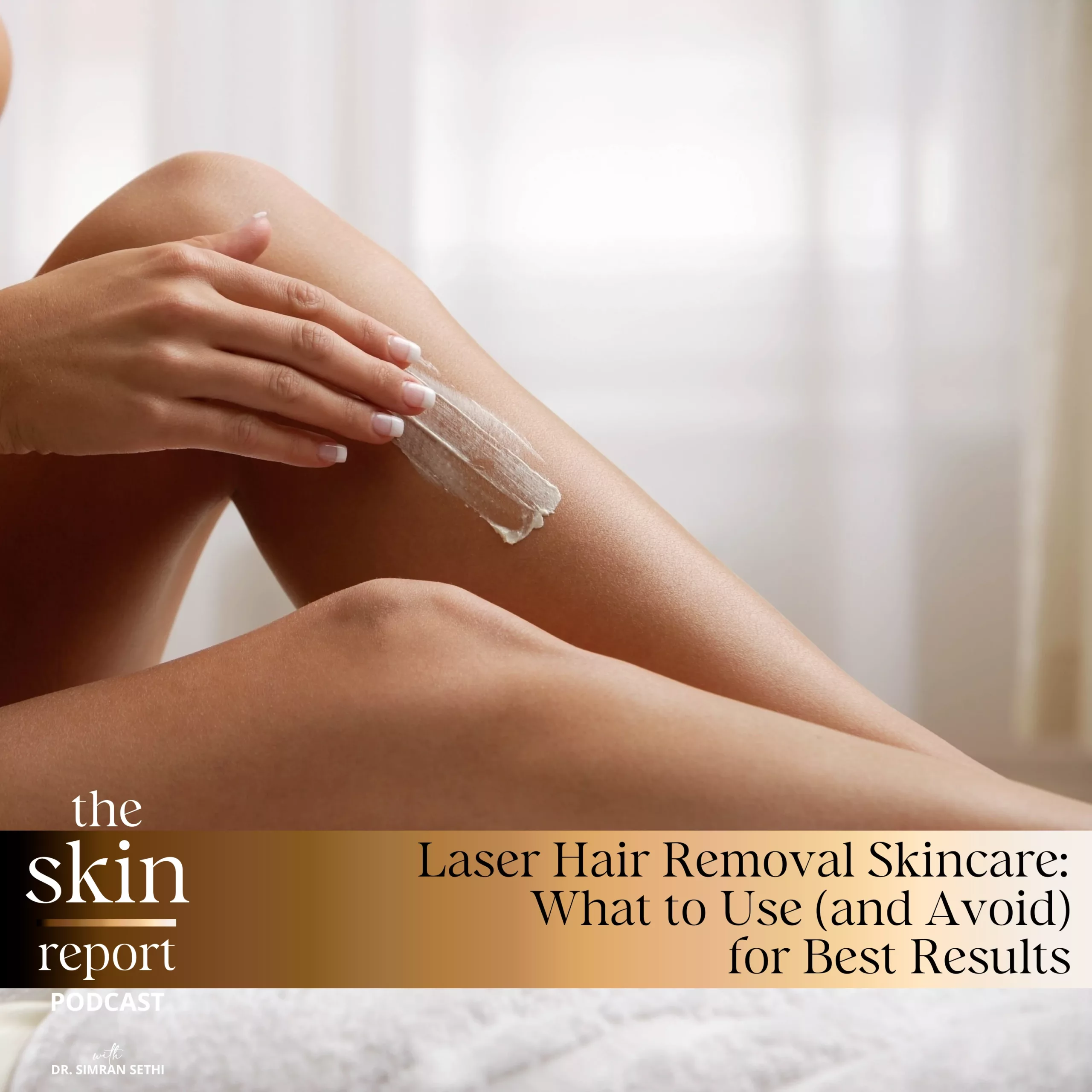The Truth About At-Home Chemical Peels:
Are They Safe?
Are at-home chemical peels safe, or are they doing more harm than good? In this episode of The Skin Report, Dr. Simran Sethi, board-certified internal medicine doctor and medical aesthetics specialist, breaks down everything you need to know about at-home peels. She discusses which ingredients to look for, what strengths are safe, and who should avoid them altogether—especially those with darker skin tones or melasma.
Dr. Sethi also explains why some at-home peels can actually worsen pigmentation and cause skin barrier damage. Tune in to learn when it’s okay to use a chemical peel at home and how to do it safely. Plus, if you’ve ever had a bad reaction to a chemical peel, Dr. Sethi shares essential tips on skin recovery.
💡 Topics Covered in This Episode:
✔️ What chemical peels do (and what they don’t do)
✔️ Common misconceptions about peels and fine lines
✔️ The biggest risks of at-home chemical peels
✔️ Safe chemical peel strengths for at-home use
✔️ How often you should do a chemical peel
✔️ Why darker skin tones should be extra cautious
📢 Have you tried an at-home chemical peel? Share your experience in the comments! Don’t forget to subscribe and turn on notifications for more expert skincare insights.
Exclusive Offer for the Skin Report Audience:
Use SKINREPORT20 in the shopping cart to receive 20% discount
LEARN MORE!
The Skin Report Podcast : Subscribe and Download!
Skin By Dr. Sethi – Blog
Skin By Dr. Sethi – Skincare
Skin By Dr. Sethi – Beauty Instagram
Dr. Sethi’s Medical Spa
Dr. Sethi’s Medical Spa – Instagram
Hello everyone. Welcome to The Skin Report. I’ve done a series of videos where I’ve talked about at-home treatments versus treatments in clinics and spas. Please check those out. But this is one of those videos in that series, and this says at-home chemical peels. Are chemical peels at home safe? When can you do them? And most importantly, when should you avoid or just never do chemical peels at home? And then finally, if you are going to do an at-home chemical peel, what strength should the peel be and how frequently should you do it? So I’m Dr. Simran Sethi, board-certified internal medicine doctor who also specializes in medical aesthetics. Let’s get started.
Chemical peels are acids that are designed to peel off the dead skin cells that are sitting on your top layer and a little bit of your top layer so that you can reduce hyperpigmentation, pigmentation from sun damage, or maybe acne scars. Chemical peels never reduce fine lines or reduce acne scarring. So I just want to say that again because that is a common misconception.
For a very long time, there have been at-home versions of chemical peels, and those of you who have a medical spa or an esthetician know so much about chemical peels and you know the dangers of doing the wrong peel on the wrong skin type or the wrong strength. So this video is really directed to people who are maybe not in that professional space, and I just want to tell you what the facts are so that you make safe choices, and for those of you who work in aesthetics and are professionals, also to realize that there are people who are doing these at home and maybe how to treat them once they’ve come to you if they have had a bad result.
So now, why do you not do them at home? And again, I know you’re thinking, “She’s going to talk about all the negatives of doing chemical peels at home,” but I’m actually going to go into when it’s okay to do a chemical peel at home, which means I’m going to tell you what kind of strengths of chemical peels you can use at home safely so that if you need to, you can do that.
So first of all, let’s go back to what is a chemical peel. It’s acids. And when you use an acid to break your skin, if your skin cannot tolerate it, you are actually going to break your skin barrier along with it. We’ve done a whole video on how to repair a broken skin barrier, and I would urge you to go to that if you have had the experience of a bad chemical peel that has now caused skin barrier breakage.
Chemical peels are strong acids. Usually they’re also paired with things like retinol, because retinol increases skin cell turnover, and chemical peels that are done in the professional setting typically have very high dosage of retinol, which is great because they’re done in a controlled environment, they’re done by a professional who knows whether this peel was right for you and also knows what kind of aftercare you should have with the peel, what kind of pre-care you should have, like what kind of skincare products you should stop before getting that peel. So they have acids in them like glycolic and lactic acid, they have retinols in them. And then many chemical peels also have sort of deep pigmentation compounds in them, hydroquinone, mandelic acid, azelaic acid, bearberry extract, and that’s, again, a good thing because the job for chemical peel is to reduce pigmentation. So these are common things you’ll find in chemical peels.
The fourth thing a lot of chemical peels have and should have is some sort of calming agent or a group of calming agents because chemical peels are kind of caustic, right? They’re meant to remove off this dead skin layer, remove off this hyperpigmented epidermal layer. When you’re doing that, you can break the skin barrier. So to prevent that from happening, many chemical peel formulations will have some sort of anti-inflammatory soothing agents in them, maybe green tea, maybe extracts, botanical extracts that help sort of protect that skin barrier breakage.
So when you’re looking at at-home versions of chemical peels, you will find versions that have all these things. I usually find versions that have a lactic or glycolic acid. Sometimes they have these calming agents, sometimes they don’t. If they don’t have the calming agents, I get a little concerned. But many of them have sort of a combo or they just have the acid. I don’t see a lot of at-home chemical peels that have retinol in them, and that might just be because in the United States, retinol and higher doses of retinol can only be administered in medical offices, so that’s probably preventing that. But most at-home chemical peel formulations either are just a glycolic or lactic acid or they’re a glycolic, lactic acid combined with some sort of calming agent.
Now, who should not do at-home chemical peels? At-home chemical peels are very risky when you have a darker skin tone. Darker skin tones, skin types 4 through 6, their safety mechanism or their skin’s response to a breakage in the skin barrier or any kind of skin insult is to produce pigmentation. So if you have a darker skin tone and you decide to do an at-home chemical peel, likely to reduce pigmentation, or post-inflammatory hyperpigmentation, or dark spots from acne, if your chemical peel is way too strong for your skin, breaks your skin barrier, it will stimulate more pigmentation and you have definitely then worsened the problem.
There are a lot of people who will come in with really bad hyperpigmentation after they’ve gotten a chemical peel that they bought online. They don’t usually even know the strength of the peel they bought because it’s not even labeled. There are a lot of products out there that don’t even tell you what percentage that glycolic or lactic acid is. I know this from experience, darker skin tones are definitely going to put themselves at risk if they do at-home chemical peel. So that’s a group that I would say please don’t just don’t do it.
The second group, if you have a condition like melasma, people with melasma are already likely to hyperpigment and they also have already a broken skin barrier, so now their skin is even more prone to hyperpigment because they have that genetic tendency and they have a broken skin barrier. So if you apply a chemical peel to your skin if you have melasma, at home especially, and when you don’t know what’s in it, you are going to definitely worsen that melasma. And remember, at-home chemical peels usually don’t have retinol in them. You need retinol to increase skin cell turnover to help take that pigment off your skin. So now you have basically applied an acid to your skin that’s going to burn it and worsen your pigmentation. So that’s the next group that should not do chemical peels at home.
Then finally, the other not sort of group that shouldn’t do chemical peels, but I’m going to tell you about one of the other things that scare me about chemical peels is the fact that people don’t know how to apply them. When you apply chemical peel, it can kind of burn your skin, right? It’ll feel warm on your skin, it’ll have a burning sensation. And a lot of people apply them incorrectly. People will apply too much of a layer in one part of their face and not enough in another part. So even if it is a good chemical peel and you don’t apply properly, it’s not going to do anything good for you. And the other scarier one, and I have seen this happen to people, is applying the chemical peel right underneath your eyes. I’ve seen people apply a strong chemical peel at home right below their eyes and it causes a horrible chemical burn.
So the application part now applies to anybody doing a chemical peel at home. So if you’re going to do a chemical peel at home, remember there’s going to be variation on how you’ve applied it, and that can be kind of risky, especially because it burns. So that’s another reason why I’m not the biggest fan of home chemical peels.
Okay, so I told you all these negative things about at-home chemical peels, and you’re thinking, “Okay, when can I do a chemical peel at home?” Which you can, but you have to look for the following things. When you’re looking at a chemical peel, the first thing you need to know is what’s in the peel and what’s strength it is. A chemical peel will have to have a glycolic or lactic acid in it to do a exfoliation of that dead skin layer. In my opinion, if something has a percentage of 5% to about 10 or 12% of glycolic or lactic acid, I think it is reasonable to be able to do that at home tolerated well. The only group that I would caution against in this scenario is people with an already broken skin barrier, and that’s if they have very dry skin, or they have melasma, or they have rosacea, or sensitive skin. But if you have normal skin, you’re trying to get rid of just sort of light sun damage, I think a strength of 5 to about 12% of glycolic or lactic acid is actually safe to do at home.
The second thing to look for in your chemical peel is for it to have some sort of anti-inflammatory group of compounds. I don’t recommend doing a chemical peel that is 5% or greater without having some sort of anti-inflammatory botanical compounds in them. If you have those anti-inflammatory products formulated with a peel, the peel can be very safe. It’s not going to break your skin barrier in most cases. Look for the strength, 5% to 12%, along with hydrating botanicals, and those can include green tea extract, azelaic acid, mandelic acid, maybe even something like glycerin, things that are just calming. If you have normal skin or if you have acne but don’t have excess dryness, you have a peel that also has hydrating botanicals in it, you actually can do a chemical peel at home safely.
Finally, let’s go over how often should you do one. There are some peels that have to be done kind of frequently, but if you’re doing a peel that is about 10% to 12% in strength and if you have normal skin, I would say you can do it maybe once a month. If you have a peel that is lighter than that, you could probably do it once a week. But remember, if you have sensitive skin, dry skin, or melasma, you likely don’t want to do that and you want to stick to going to a professional and maybe get a higher strength peel, which is at least safer. They’ll give you better results and keep you from breaking your skin barrier.
We covered a lot on chemical peels. I think it’s a really interesting topic. If you are an aesthetic provider who does chemical peels and you want to share some of the experiences you’ve had with your clients doing these at home, or if you do chemical peels at home, what are your experiences? I would love to hear them in the comments. Please subscribe. Turn on your notifications so that you know whenever we release new content.

